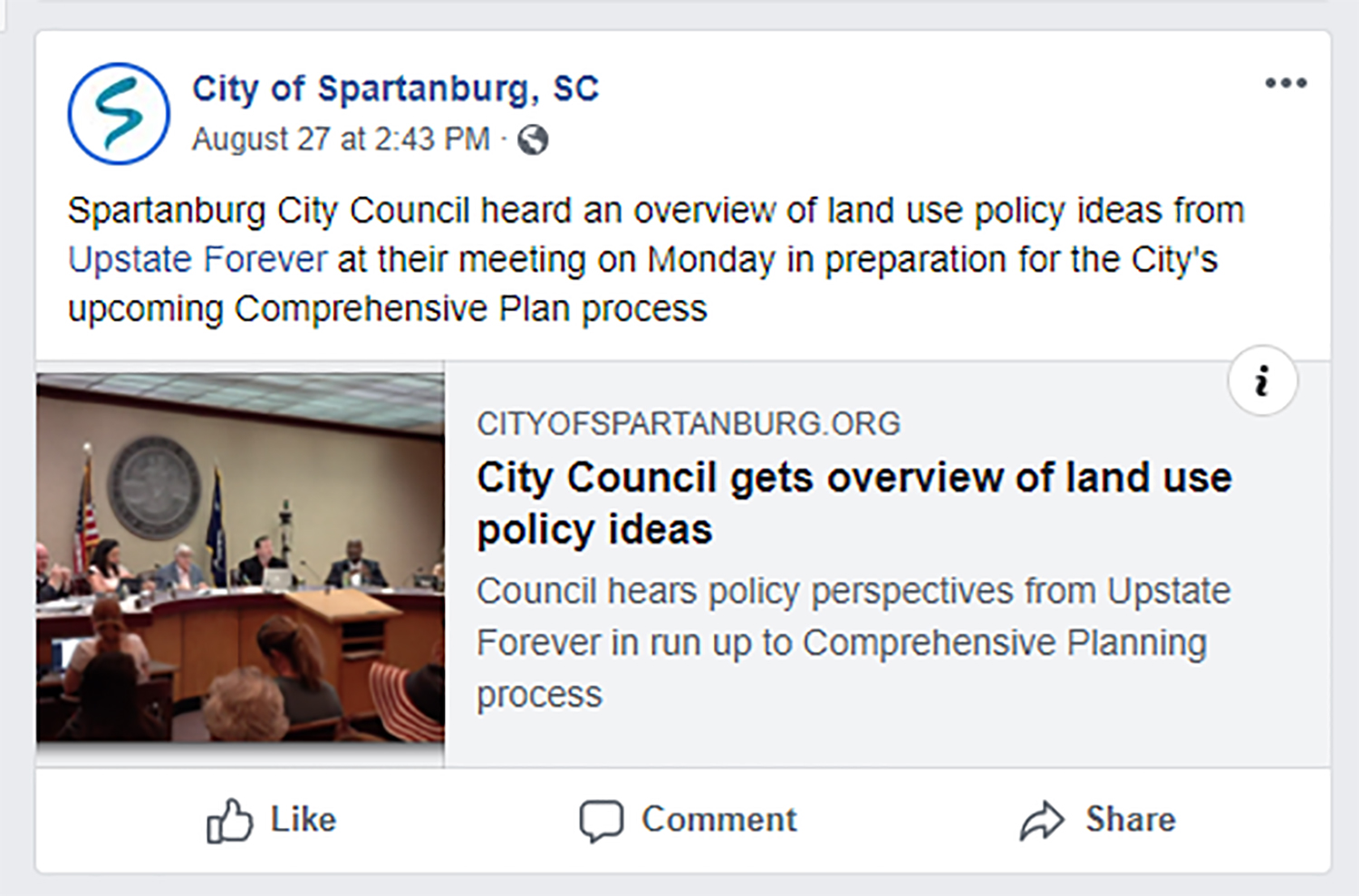Cities and towns are accelerating their adoption of social media as a communications tool, and the panel at a social media session during the Municipal Association of South Carolina's Annual Meeting showed how this can involve many people, including the city's leadership and staff.
The panel featured Newberry Mayor Foster Senn, whose Twitter account works alongside all the City of Newberry social media channels. Mayor Senn was joined by Christopher George who is the communications manager for the City of Spartanburg and Shawn Bell who serves as city administrator, complete with social media duties, for the City of Fountain Inn.
Over time in Spartanburg, George said, "social media has become, without a doubt, our number-one way of reaching people."

The City of Spartanburg's social media includes videos and updates about city council meetings.
He said the original build-up of the social media audience occurred around 2012.
"We were very keen on pushing downtown development at a time when it was really just getting started for us," he said. "The local media wasn't paying quite as much attention to it. They are now. We thought the way to build our audience was to talk about our downtown business community, sort of become a news outlet for it. That was very successful for us."
George added that business development may have gotten the audience subscribed, but they are now engaged in communication for other topics. Spartanburg routinely gets thousands of views for city council meetings on Facebook Live.
Topics addressed by the panel included the importance of finding a way to make a city or town's voice consistent and limiting the total number of channels when possible to maintain better control of the city's overall message. They also discussed the challenge of handling questions through social media in an era where audiences often expect immediate answers, even when questions are asked after hours.
In Newberry, Senn's use of Twitter is not unusual for an elected official. Pushing out information, he said, promotes transparency and helps keep residents informed.
"They want to know about their town, they want to know that they're a part of it. If they're informed, they feel more a part of it," he said.
Social media channels now do much of the heavy lifting for special event promotion, and Bell drew attention to Fountain Inn's Facebook promotions of its Saturday farmers market, Fourth of July celebration, Christmas events and Coffee with Council gatherings. He also uses it to promote "Ask the Administrator" sessions, an idea he said came to him from Goose Creek City Administrator Jake Broom. In Fountain Inn, those sessions take the form of a quarterly appointment for Bell to answer questions on Facebook for a couple of hours on a Thursday evening.

The City of Spartanburg shares photos and information about current development projects.
Social media is a two-way communication. The panel discussed the careful and thoughtful responses to negative posts, and only removing those posts that are blatantly abusive or profane after documenting them, as social media is subject to the SC Freedom of Information Act. Senn noted that announcements of new businesses are often met with at least some comments that are negative or expressing a wish that some other business was coming to town, but he said he knew that other cities were having precisely the same experience.
George described the efforts in Spartanburg to maintain an open forum, "and definitely never silence anybody's opinion on a local topic."
Negative comments, he said, can provide an opportunity "to deliver accurate information … It's not really for the person who's posting the negative comment, it's for everybody else. If somebody says something that's blatantly incorrect, you're not just correcting them, you're correcting for anybody that's going to see that."
Social media statistics
- YouTube is highly popular among social media users, with 83% of all consumers preferring it as a form of social media marketing, according to Hubspot.
- Facebook is still widely used, with 68% of U.S. residents using it, according to the Pew Research Center, but a dropping percentage of teen users — 71% in 2015, and 51% in 2019.
- Instagram is doing well among young audiences, with 59% of all of its users under the age of 30, according to Statista.
- Twitter draws in a relatively narrow audience. Statista counts 24% of U.S. adults as Twitter users.
